Back in 2012, when Facebook was going public at $38 a share and John McGuinness was winning yet another TT, a gentleman by the name of Mark Hawwa was rounding up a group of likeminded bike riders in Sydney. Their name was simply ‘CaféRacer’.
We would head out on tours for long weekends and stop at these beautiful locations. We were there to camp under the banner of friendship and mutual assistance.
After seeing a promo shot of Don Draper astride a 1957 Matchless G3LS, Hawwa had the eminent idea to ride a classic motorbike whilst also wearing his finest suit to raise awareness and capital for prostate cancer research.
We all know that the motorcycling community is a tight-knit group. Endless hours tinkering in the garage, ordering new parts online and chatting with our mates about the quirky little things we’re currently doing to show our passion for the freedom of riding a motorbike. It’s what bonds us all together. So, it’S no surprise that when Mark proposed the idea, it took hold and grew faster than launching a Kawasaki H2R down a perfectly prepped drag strip.
What started with 3,000 riders across 64 cities in 2012, grew to 56,000 riders across 2,531 cities in 2020, and has seen a total of $27.45m raised throughout that period. The growth has been aided by a couple of key changes to the initial idea. In 2014, Triumph Motorcycles came on board as a global partner and have remained at the centre of the DGR ever since. This helped to raise awareness of the event, bring in a wider audience and even attract the attention of a younger demographic – one that’s typically not the vintage bike rider. Though today you’ll see everything from a CBR125-riding, penguin-suit-wearing sophisticated gentleman approaching his seventies to a kilt-wearing young lad riding a Harley.
Another rather important change occurred in 2016, when one of the ride hosts was prematurely lost to suicide. In response, the DGR began their long-term partnership with the men’s mental health charity Movember. This partnership continues to help raise awareness and hopes to break down the stigma surrounding male mental health issues.
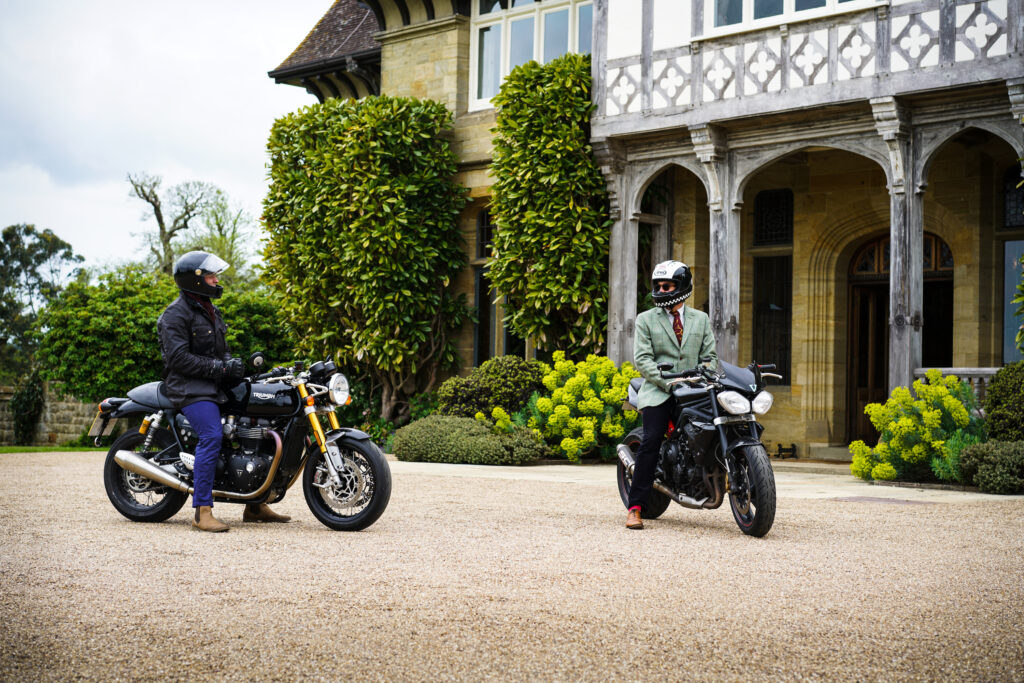
This is probably one of the bravest and most forward-thinking decisions that could have been made. Men are traditionally brought up to carry themselves in a certain way. It varies from person to person, but taught masculinity is one of strength, to know the answers and to not ask for help. Because asking for help is a sign of weakness or vulnerability. To be vulnerable as a man is not something many are brought up to consider. Yet it’s due to this idea of masculinity that the rate of suicide is 400% higher amongst men than women in the UK. I’ve personally found that the main reason for this is that when things really start getting bad for women, they will ask for help but men resist. The darkness and pain gets bottled up with nowhere to go – and eventually, it gets too much.
For the DGR to partner with Movember and 114,000 riders to join the ride the following year in 2017, it helped to normalise the conversation around male mental health. The conversation that sometimes things are not okay – and that’s okay. When you need help, it isn’t a sign of being any less of a man.
With Covid-19 affecting each of us in a different way, it impacted the DGR by delaying the 2020 event, and then eventually reducing the event to a ‘ride solo’. This changed the format from a mass-gathering event to one where each rider would complete their journey alone, instead of in packs, like in previous years.
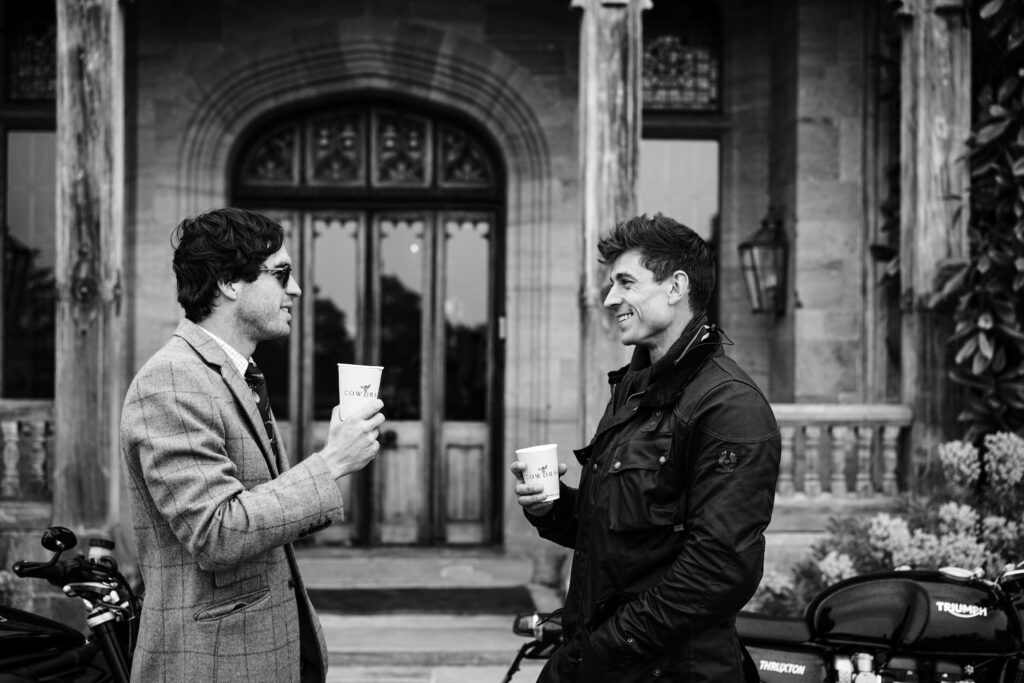
This ride solo or ride alone is a perfect symbol for how many people have felt since the pandemic started. Relegated to isolation at home, lives on hold, and most of our enjoyable pastimes taken away. For so many men, this has exacerbated their fight with their own mental health, with increased fears of losing jobs, relationship worries and financial concerns. Through the fundraising and ride solo events, the DGR were about to raise $2.7M in 2020.
Finally, in 2021, in the UK, we were able to ride together once more. As is so commonplace, the day started off with bluebird skies in London. Bright but no glare through the visor of my black Hedon helmet. Having prepped the bike the night before, I donned my Belstaff Trialmaster and casual gentleman’s attire put together by Erika at Dappad. I jumped enthusiastically on the Triumph Thruxton RS and blasted from south London to our meeting spot, a car park in Hyde Park. I was meeting my long-term friend, Chris, or Captain as he is informally known. In contrast to my elegant and sophisticated modern classic bike, Captain rocked up on his 2018 Triumph Street Triple R. He has taken all the decals, fairings and colour off, fitted it with an SC Project exhaust, and drives it like he finds nothing more pleasurable in the world, popping wheelies and jumping through gears on the quick shifter simply to hear the engine note change.
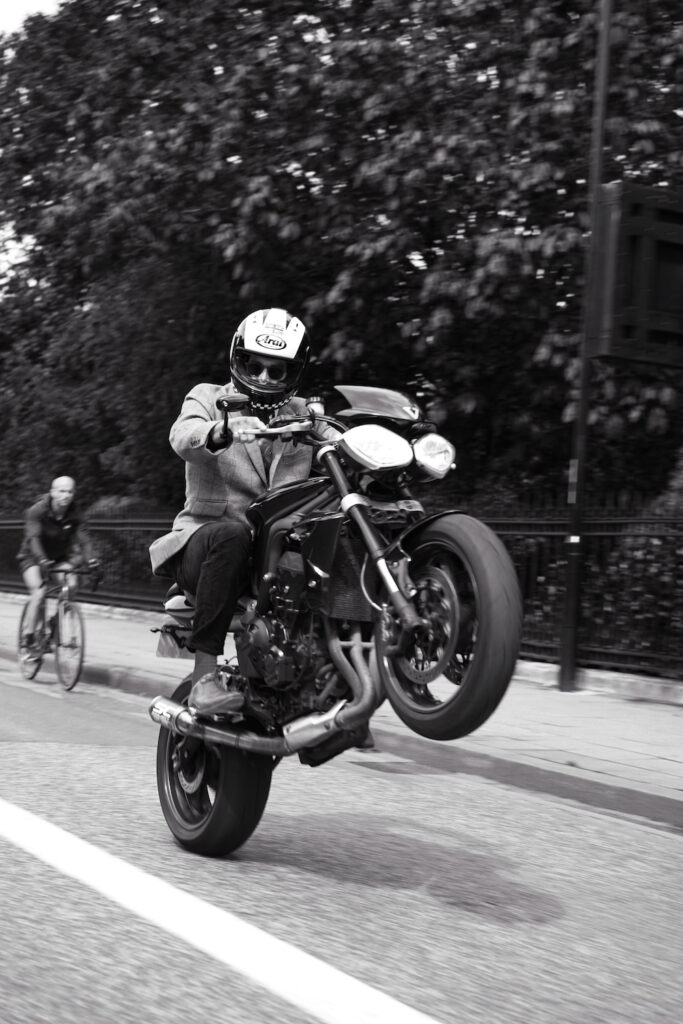
After a quick chat, we jumped on and headed towards Piccadilly to hopefully find a group of other riders. As we meandered through the slow roads of Hyde Park, I found myself looking down at the beautifully crafted aluminium yoke that holds the gold, fully adjustable 43mm upside down big piston forks in place. My eye was then drawn to the brushed aluminium tank strap and Monza style filler cap. All are essential styling pieces that bring the classic café racer look to a modern bike. Upon first glance at the Thruxton RS, you could be easily led to think this is a vintage bike, but take just a tiny step closer and the super sticky Metzler tyres, effective Brembo brakes and brilliant 1200cc parallel-twin engine will all quickly tell you otherwise.
Chris and I were lucky: on our ride out of the park, we were passed by a rather large group of about 30 other bikes, all partaking in the DGR this year. What an epic sight to be surrounded by bikes old and new, men and women, young and old, and even a family of three in a sidecar, all dressed to the nines. Rolling through the streets of London, down Park Lane and towards Piccadilly Circus was something I had never experienced with such a large group of bikes. The noise from the exhausts was emotive and powerful. It reminded me of the first year I owned a bike. I would go out riding with my friends, hooning around the Surrey and Berkshire B-roads while cranking through gears on the red line. There’s something special about being in a pack as a rider, it changes the whole experience and makes it far more enjoyable. Pedestrians would stop in their tracks to take photos and videos of us riding past and, at one point, there may have even been a burnout by Captain, while all 30 bikes simultaneously revved their engines down Piccadilly. All these engines produce a distinctly different sound from their big single cylinders, v-twins, triples and inline 4s. The moment filled my chest with a certain level of pride and satisfaction to be part of such a great event. I was riding with a bunch of men that I had never spoken to, but we were all bonded by our passion for motorcycles and desire to do good.
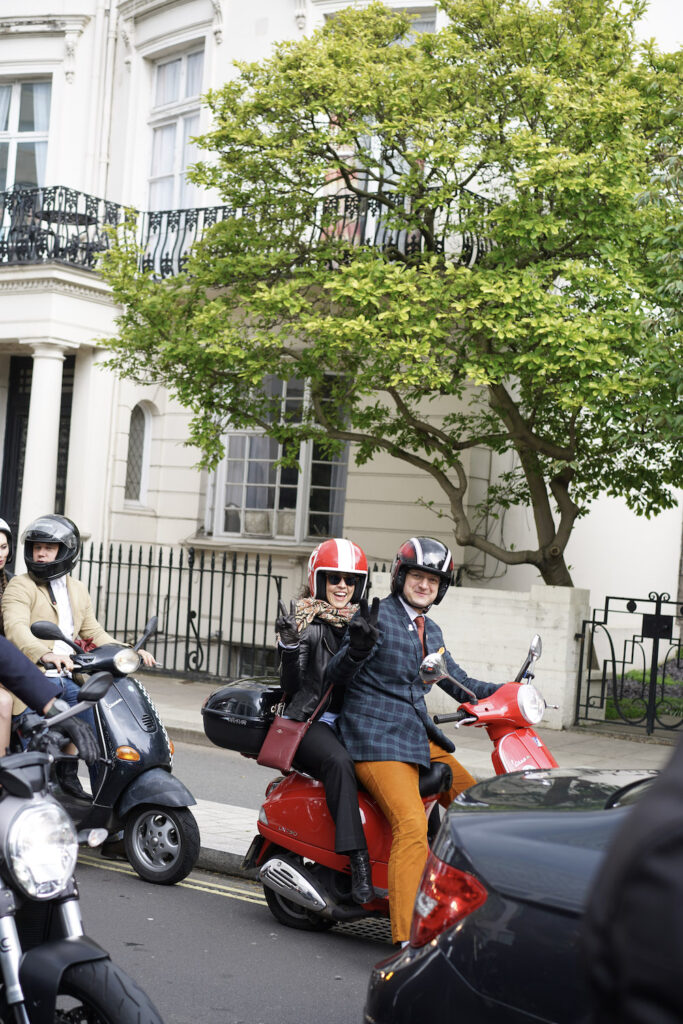
After a few hours gently pootling along at 20mph around London’s iconic city streets, we decided it was time to open them up and head out of town. Smashing down the A3, sporadically pulling over to avoid the occasional heavy downpours, it gave us the chance to put the modern details of the Thruxton RS to the test and compare it to the very modern Street Triple. Certainly on paper and in design, these two are not comparable bikes, but if the goal of the manufacturer is to simply put bums on seats and smiles on faces, then to me it seems like a fair comparison. The Thruxton is certainly down on power and revs compared to the Street Triple, 103bhp to 116bhp and 8,000rpm to over 12,000rpm, respectively, meaning that I’m changing gear more often. Not that this is a bad thing, though, smashing through gears on the up and blipping the throttle on downshifts is one of the joys of riding.
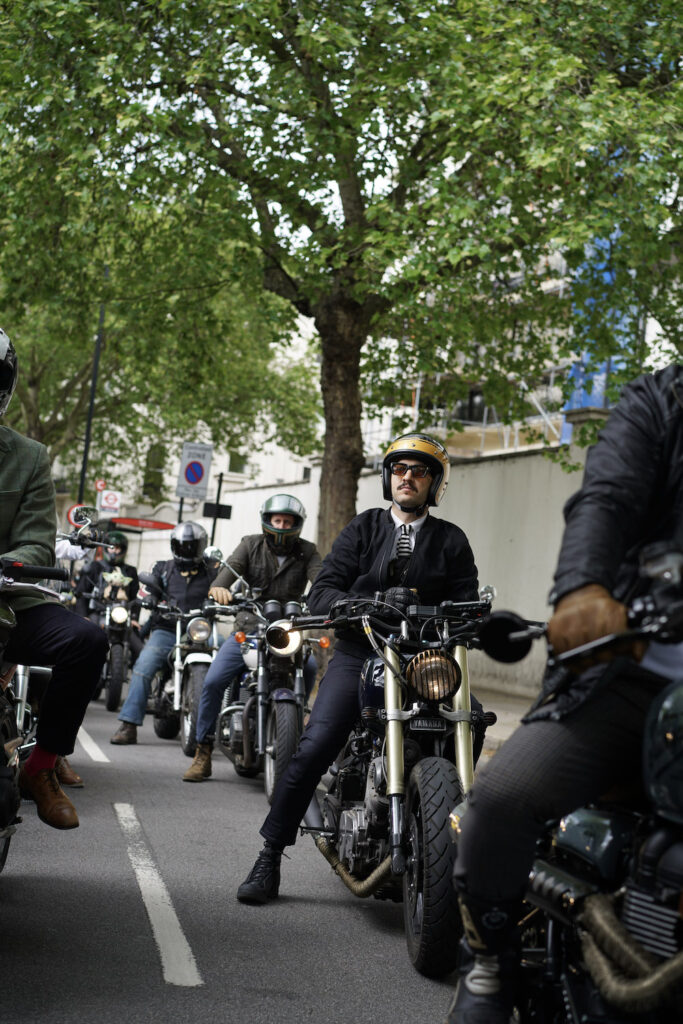
Once we got off the main road and onto the twisty smaller ones, the smiles started to grow as we both relished the opportunity of throwing these excellent bikes into corners and powering out the other side. For a bike that looks like it’s from the 60s, the Thruxton handles very much like a modern-day marvel should. Almost like The Beatles turning up in 2021, but with modern haircuts, perfectly tailored Tom Ford suits and music that would make a newborn baby smile from ear to ear.
Having owned a Street Triple RS for 3 years, I can tell you that both bikes are a joy to ride, and it will simply come down to personal preference on styling and budget when deciding which to go for. A new Street Triple RS will cost you about £11,000 with a couple of options, and the Thruxton RS will set you back around £13,000 before you start making changes.
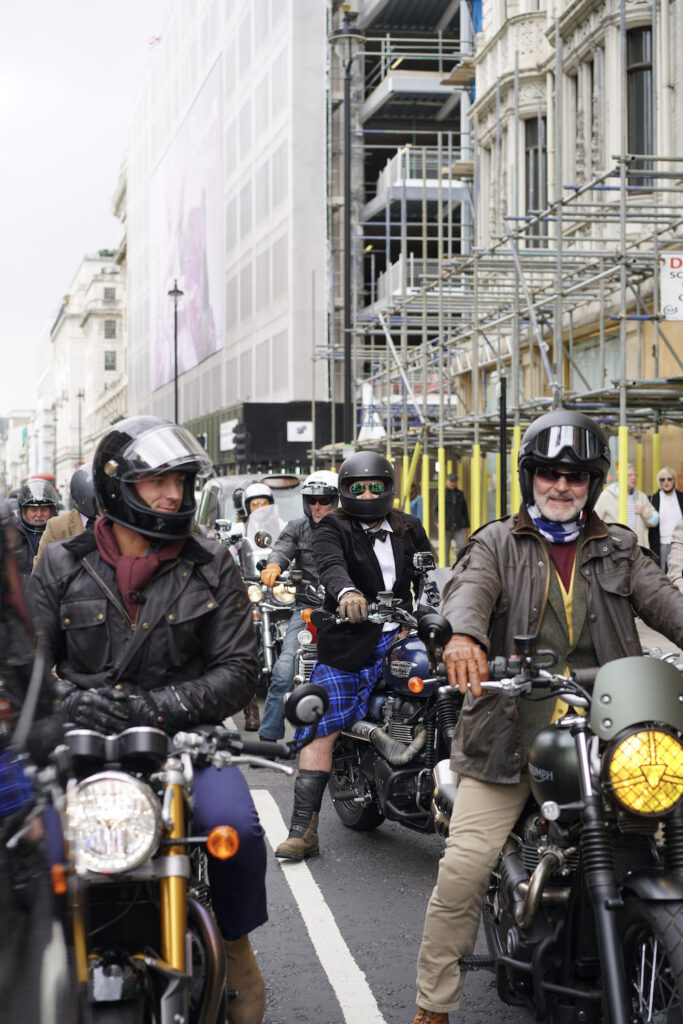
The main reason for the journey out of town, though, was not to test drive Triumph’s incredible stable of bikes though. It was an opportunity for Chris and I to grab a coffee and have a proper catch up. It’s important now, more than ever, to connect with your close friends and check in once in a while, and ensure you’re making time for each other. So Inspired by the DGR and its charity partner Movember, we found ourselves quite the resplendent spot to have a chinwag.
The 16,500-acre Cowdray Estate is arguably the home of British Polo. This family-owned estate in the heart of the stunning South Downs National Park is steeped in history and heritage. You’ll find one of England’s most important early Tudor houses in addition to their award-winning farm shop and café, and luxury accommodation. Not to mention the 18-hole golf course. Cowdray Park House was built in 1874 and has been the family seat since 1909 when it was bought by Sir Weetman Dickinson Pearson, who became the 1st Viscount Cowdray. It’s hallowed halls were the perfect location to pull up for afternoon tea and check in with Chris.
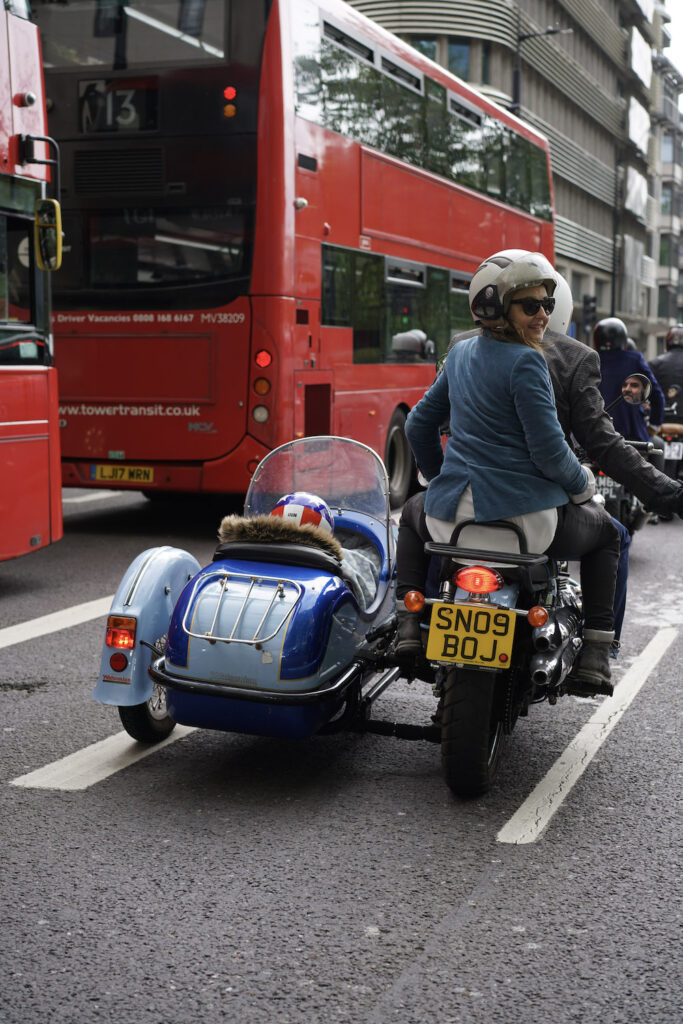
Four years ago, Chris called me and told me he was facing some issues. He was reaching out to me to talk about them and told me how he was going to get help. At that moment I was in an emotional conflict. On one hand, I felt ashamed I hadn’t spotted any signs of his struggles; on the other, I felt proud that he was owning his situation and reaching out. As we both look back on that period from a position of balanced mental health, It was great to have an honest and open chat with Chris to understand more about his recovery process – about how, by simply reaching out and talking to someone about the struggles he was facing, it started a journey that led him out of depression and back into being the amazing father, husband, and friend he is.
Having spoken to Chris and many other men, the common thread is that most believe they need to behave in a certain way to be masculine. This outdated approach to masculinity doesn’t have an effect when things are going smoothly, but when depression creeps in and drinking turns from a celebration to a coping mechanism, that masculine belief does not help. In these situations, the smart individual knows they don’t have all the answers. They know that to get the best result in a business you employ the right people. You don’t need to know everything; you just need to know the right person who has the answer. So why don’t we adopt that same mentality when it comes to our own mental health? Mainly because we’ve been taught that asking for help shows weakness. But when every person has these moments of struggle, doesn’t it just make us human? The issue is that you don’t see when it happens to others because men rarely talk about their struggles.
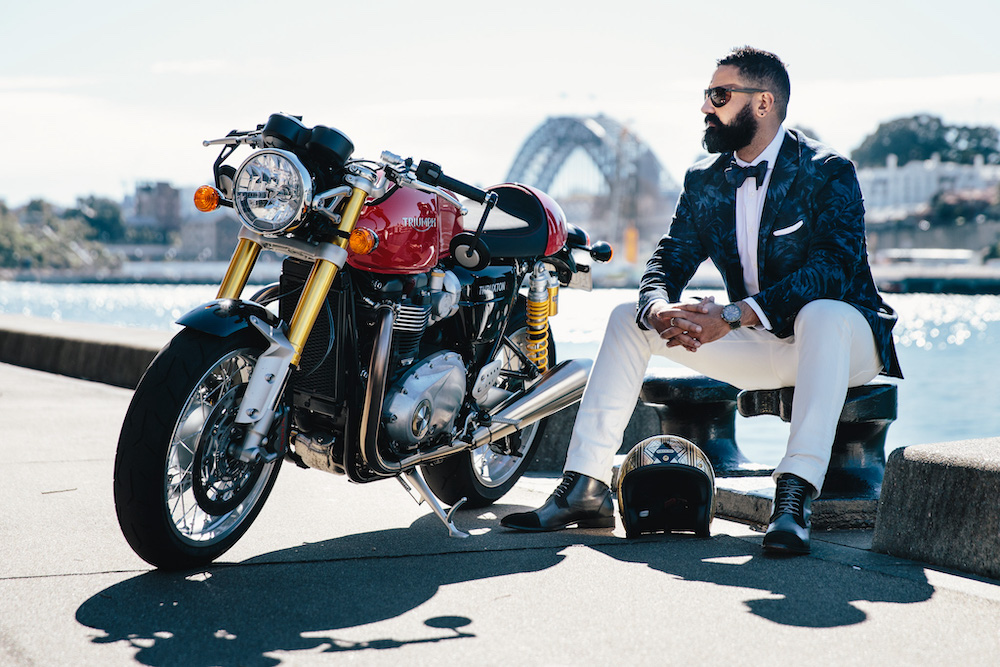
Whilst Chris and I have shared many hours talking about our own mental health struggles to keep the conversation and dialogue open to avert disaster, so many do not. I urge you to seek help and to understand that there are so many who would gladly offer you support.
Whether you ride or not, the DGR has created innumerable connections over the past 10 years. 340,000 riders across 107 countries, raising over $27m and starting countless conversations that have inevitably led to significant changes in many people’s lives.
Being a man isn’t about being strong and silent anymore.

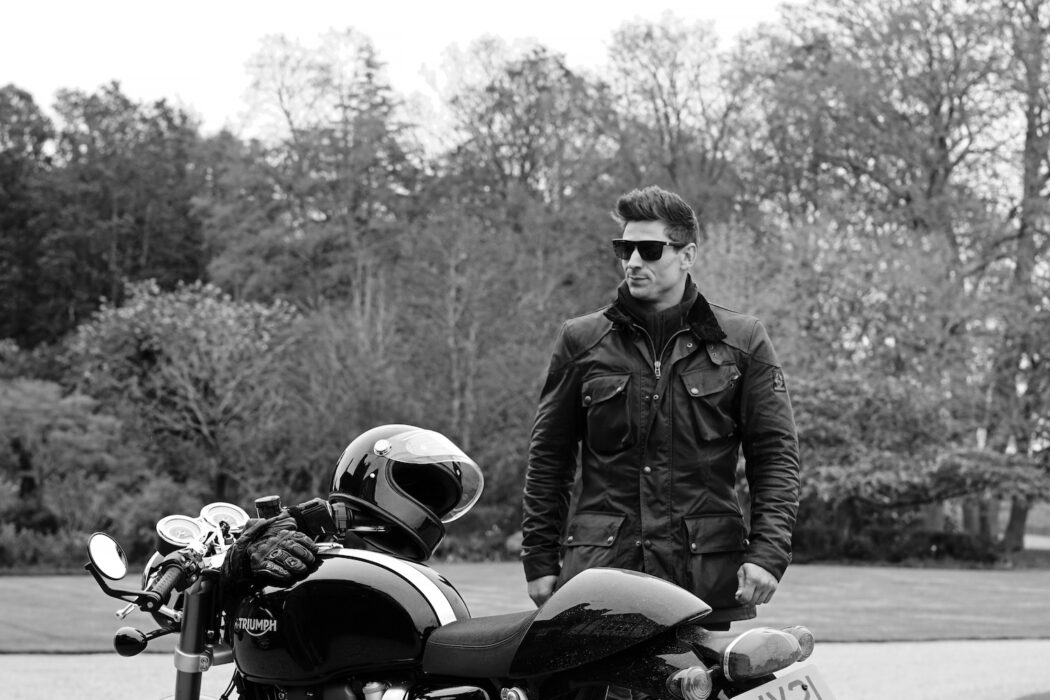
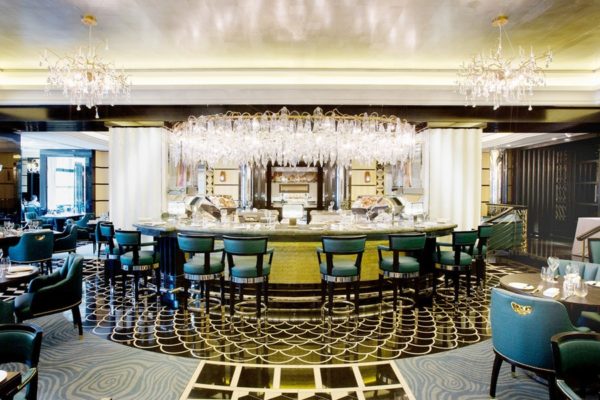
Hold fast - Peter Robinson continues The Review's Restomod Discovery .The Review Magazine. Life. Style.
[…] his childhood friend, Chris Bollingbrook. The location was central London where we would attend the Distinguished Gentleman’s Ride Out, a large scale classic motorcycle ride that raises millions for men’s mental health and […]